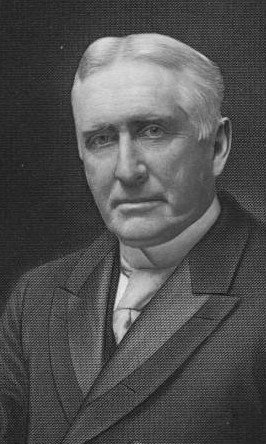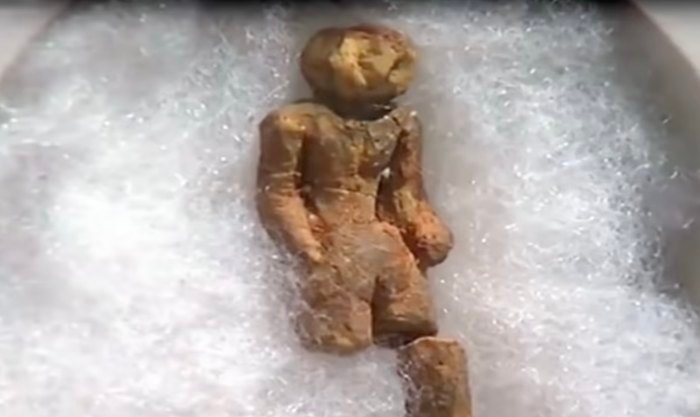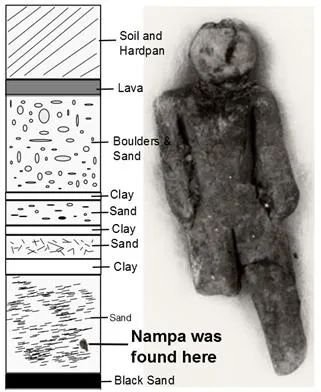
In the fifth section of Earth in Upheaval, Chapter 6, Immanuel Velikovsky turns his attention from South America to the Pacific Northwest. The Columbia Plateau is a flood basalt plateau that lies between the Cascade Range and the Rocky Mountains in the US states of Washington, Oregon and Idaho. According to current geology, it was formed over a period of 10-15 million years during the Miocene and Pliocene Epochs (17-2.6 Mya) by a succession of extensive fissure eruptions, which were possibly fed by the Yellowstone Hotspot.
To set the scene, Velikovsky quotes again from The Origin and History of the Earth, the chapter Rollin Thomas Chamberlin contributed to The World and Man as Science Sees Them, a 1937 compilation of science-related articles edited by the American astronomer Forest Ray Moulton. The American geologist Chamberlin, you may recall, was one of Velikovsky’s sources in the section In Northern China, in the previous chapter of Earth in Upheaval:
Episodes of uplift and mountain restoration followed in the far west. Lavas broke out from innumerable volcanic vents, and at certain times prodigious floods of molten rock poured out in fissure eruptions. Flow after flow of lava in northwestern Wyoming has given us many of the attractions of Yellowstone National Park. enough heat still remains in some of these buried volcanic rocks to convert percolating ground water into steam which emerges in grottoes and which, here and there, in geyser action throws jets of hot water high into the air. Much greater quantities of lava flowed out in Washington, Oregon and Idaho, where some two hundred thousand square miles [500,000 km2] were covered to depths of hundreds and even several thousands of feet [up to 1.8 km]. The Snake River has cut the Seven Devils Canyon more than three thousand feet [1 km] deep without reaching the bottom of the lavas. (Chamberlin 85-86)

Velikovsky opens his discussion of the Columbian Plateau by making a very pertinent point:
This enormous area, embracing all the Northern states between the Rocky Mountains and the Pacific Coast, was flooded with molten rock and metal pouring out of fissures torn in the ground. Certainly it does not look like a volcanic eruption of our days, and for this reason alone, if not for a multitude of others, the principle of uniformity is definitely misleading. (Velikovsky 81)
The Principle of Uniformitarianism was summed up by Charles Lyell when he gave his Principles of Geology the subtitle An Attempt to Explain the Former Changes of the Earth’s Surface by Reference to Causes Now in Operation. Flood basalts are clearly in violation of this principle. These spectacular outpourings of lava are not in operation today. In fact, there hasn’t been such an event for over a million years, if the geologists are to be believed.
The scale of flood basalt eruptions staggers the modern imagination. Velikovsky quotes from An Introduction to Historical Geology by the American geologist William John Miller. This college textbook was first published in 1916, when Miller was Professor of Geology at Hamilton College, in Cinton, New York. It proved so successful that it went through six editions between then and 1952. Velikovsky cites the fifth edition (1942):
Columbia Plateau The building up of the vast lava region known as the Columbia Plateau, covering 125,000 square miles [324,000 km2] of the north- western United States between the Cascade and Rocky Mountains, took place during Cenozoic time. It is one of the few greatest lava fields of the world. Fissure eruptions seem to have produced most of the lava-flows which commonly spread far from their sources, and piled up to thicknesses as great as 5000 feet [1.5 km] or more. The vulcanism continued with more or less vigor through Tertiary time, but it was most pronounced and widespread in the Miocene epoch. It gradually diminished during the present (Quaternary) period, some of the most interesting, recent volcanic rocks being in Craters of the Moon National Monument in Idaho (Miller 355)

The Craters of the Moon Lava Field lies in south-central Idaho. As many as sixty distinct lava flows have been identified in the field, ranging in age from 15,000 to 2,000 years. Strictly speaking, the Craters of the Moon lava field is not part of the Columbia Plateau, which was formed before the onset of the Pleistocene (2.6 Mya). But Miller clearly regards the vulcanism that created the Craters of the Moon as the most recent activity associated with the Columbia Plateau. On this basis Velikovsky argues, then, that the Columbia Plateau itself was created when humans had already settled this area:
And here is a striking thing, striking because we are too readily disposed to consider that we have solved a problem when we remove it to the remote past. “All competent observers have remarked the freshness of lava deposits in the Snake River valley in Idaho.”
Only a few thousand years ago lava flowed there over an area larger than France, Switzerland, and Belgium combined; it flowed not as a creek, not as a river, not even as an overflowing stream, but as a flood, deluging horizon after horizon, filling all the valleys, devouring all the forests and habitations, steaming large lakes out of existence as though they were little potholes filled with water, swelling ever higher and overtopping mountains and burying them deep beneath molten stone, boiling and bubbling, thousands of feet thick, billions of tons heavy. (Velikovsky 81)

This is simply not true. The Columbia Plateau covers an area of about 210,000 km2, which is smaller than the area of Great Britain. The Snake River Basin Ecoregion covers about 66,000 km2, which is slightly larger than Sri Lanka. So where did Velikovsky get his information about an area larger than France, Switzerland, and Belgium combined? From William J Miller, who, as we have just seen, puts the area of the Columbia Plateau at 125,000 square miles [324,000 km2], which is indeed slightly larger than the area of France, Switzerland, and Belgium combined. But Miller’s figure is now considered out of date, as is his inclusion of the Snake River Basin in the Columbia Plateau. Chamberlin gave the even larger figure of 200,000 square miles [500,000 km2].
The quotation about the freshness of lava deposits in the Snake River valley is taken from The Ice Age in North America, and Its Bearings upon the Antiquity of Man by George Frederick Wright. Velikovsky first cited this work in The Erratic Boulders, in Chapter 2 of Earth in Upheaval, and again in Chapter 4, in the section entitled Greenland. American geologist George Frederick Wright struggled for much of his career to balance his belief in Western science with his deeply-felt Calvinist faith. He accepted James Hutton’s deep time and even defended Darwinian evolution, though he later subscribed to a theory of evolution that left room for intelligent design. One of his works bears the title Scientific Confirmations of Old Testament History. For the last fifteen years of his career he was Professor of Harmony of Science and Revelation at his alma mater, Oberlin College, Ohio. He was largely self-taught in the fields of geology and glaciology—he studied theology at Oberlin (Collopy 1).

The Nampa Figurine
Velikovsky also quotes Wright on the discovery of a figurine beneath the basaltic lava of the Snake River Valley:
A discovery in Idaho strongly confirmatory of those on the Pacific Coast is too important and interesting to be omitted.
In the autumn of 1889, Mr. Charles Francis Adams, then President of the Union Pacific Railroad, brought to my notice a small clay image, an inch and a half in length, which had been found by Mr. M. A. Kurtz while boring an artesian well at Nampa, Ada county, Idaho. The image was of slightly baked clay, incrusted in part with a coating of red oxide of iron, which indicated considerable age, and came up in the sand-pump from a depth of three hundred and twenty feet [98 m]. Near the surface the well penetrated a stratum of basalt, fifteen feet [4.6 m] thick. Below this basalt there were alternate beds of clay and quicksand to the depth mentioned, where the sandstone rock was encountered. The well was tubed with heavy iron tubing six inches [15 cm] in diameter, so that there could be no mistake about the occurrence of the image at the depth stated. The detailed evidence was published by me in the “Proceedings of the Boston Society of Natural History” for January, 1890. During the following summer, I visited the locality and found ample confirmation of it.
It is proper also to be stated that Mr. G. M. Cumming, general manager of the Union Pacific lines in that district was on the ground the day the “find” was made, and carefully scanned the evidence, with the conclusion that there was no doubt of the facts as given. Probably no person in the world was better able than he to judge of the evidence. Later, other officials of the railroad who had interests in the vicinity took pains at my suggestion to re-examine the evidence with the result of confirming it in every respect. On the other hand, no one has come forward to challenge the evidence except on purely a priori grounds arising from preconceived opinions of the extreme antiquity of the deposits in which it is said to have been found. Close attention to the accompanying conditions will, however, I think modify these preconceptions. (Wright 701-702)

The Nampa figurine remains to this day a subject of controversy. It has often been dismissed as a hoax similar to Piltdown Man, and as often held up as evidence that humans colonized the Pacific Northwest as early as 2 Mya. The simple fact is that the figurine is probably genuine, but as it was recovered from the Snake River Valley and not from the Columbia Plateau, its existence does not in any way upset the conventional history or chronology of the region. The lava deposits in the Snake River Valley date back to the early Holocene, when there were already human settlers in this region, and are quite distinct from the much earlier Columbia Plateau deposits. They are also quite distinct from the Glenns Ferry Formation, which was created during the Pliocene (5.3‒2.6 Mya). The Nampa Figurine was recovered from a stratum of sandstone beneath the lava deposits.
Wright himself believed that the figurine was thousands, not millions, of years old:
Both the unconsolidated character of the Nampa beds and the lower level at which they occur indicate a pleistocene age ... With respect to the age of the lava deposits it is also to be said that all observers (especially Hayden and Russell) call frequent attention to outflows of lava in various parts of the Snake River Valley that are very recent—some of them not more than two or three centuries old. We, therefore, are amply justified in connecting the Nampa figurine with deposits of glacial age. (Wright 705)
Velikovsky suppresses this, instead concluding this brief section with a single laconic statement:
Before the last lava sheets spread over the Columbia Plateau there were human abodes in the area. (Velikovsky 82)

Conclusions
It cannot be doubted that the existence of large igneous provinces across the globe—more than a dozen have been documented to date—flies in the face of the Principle of Gradualism, which underpins the Doctrine of Uniformitarianism. But Velikovsky’s catastrophist argument in this short section is weakened by his confusing of two different geological features: the Columbia Plateau and the basaltic deposits in the Snake River Valley (including the Craters of the Moon). The former was created in the remote past by massive and catastrophic fissure eruptions that covered a vast area of about 210,000 km2, while the latter were created recently by much smaller volcanic eruptions over an area of just 66,000 km2. In Velikovsky’s defence, professional geologists have made the same mistake.
The Nampa Figurine—assuming that it is not a hoax—is not necessarily indicative of the immense antiquity of civilization in the Pacific Northwest. It was found between strata of Pliocene and Holocene age, making Wright’s assessment of it as a genuine Native American artifact of Pleistocene age plausible.
Of course, dismissing the figurine as a hoax is always an option and the simplest way of dealing with the controversy, but the onus should be on those making such a claim to refute the documentary evidence that supports the figurine’s authenticity.
And that’s a good place to stop.
References
- Peter Sachs Collopy, George Frederick Wright and the Harmony of Science and Revelation, Honors Thesis Submitted to the Oberlin College Department of History, Ohio Department of Higher Education, Columbus, Ohio (2007)
- Rollin Thomas Chamberlin, The Origin and History of the Earth, Forest Ray Moulton (editor), The World and Man as Science Sees Them, The University of Chicago Press, Chicago (1937)
- William John Miller, An Introduction to Historical Geology: With Special Reference to North America, Fifth Edition, D Van Nostrand Company, Inc, New York (1942)
- Immanuel Velikovsky, Earth in Upheaval, Pocket Books, Simon & Schuster, New York (1955, 1977)
- George Frederick Wright, The Ice Age in North America and Its Bearings upon the Antiquity of Man, Fifth Edition, Bibliotheca Sacra Company, Oberlin, Ohio (1911)
Image Credits
- Palouse River Canyon, Washington State: US Fish and Wildlife Service (photographer), Public Domain
- Craters of the Moon National Monument and Preserve: Craters of the Moon, Idaho, USA, © Daniel Mayer (photographer), Creative Commons License
- Rollin Thomas Chamberlin: © 1970 National Academy of Sciences, Washington DC, Fair Use
- Pacific Northwest (Numbers = Initial Vulcanism in Mya): National Park Service, US Department of the Interior, Public Domain
- George Frederick Wright: Anonymous Photograph, Public Domain
- The Nampa Figurine: Idaho State Historical Society Museum, Boise, Image © Mystery History II, Fair Use
- The Nampa Figurine Stratigraphy: © Anomalien.com, Fair Use

Thanks for your contribution to the STEMsocial community. Feel free to join us on discord to get to know the rest of us!
Please consider delegating to the @stemsocial account (85% of the curation rewards are returned).
You may also include @stemsocial as a beneficiary of the rewards of this post to get a stronger support.
Congratulations @harlotscurse! You have completed the following achievement on the Hive blockchain and have been rewarded with new badge(s):
Your next target is to reach 50000 upvotes.
You can view your badges on your board and compare yourself to others in the Ranking
If you no longer want to receive notifications, reply to this comment with the word
STOPCheck out the last post from @hivebuzz: